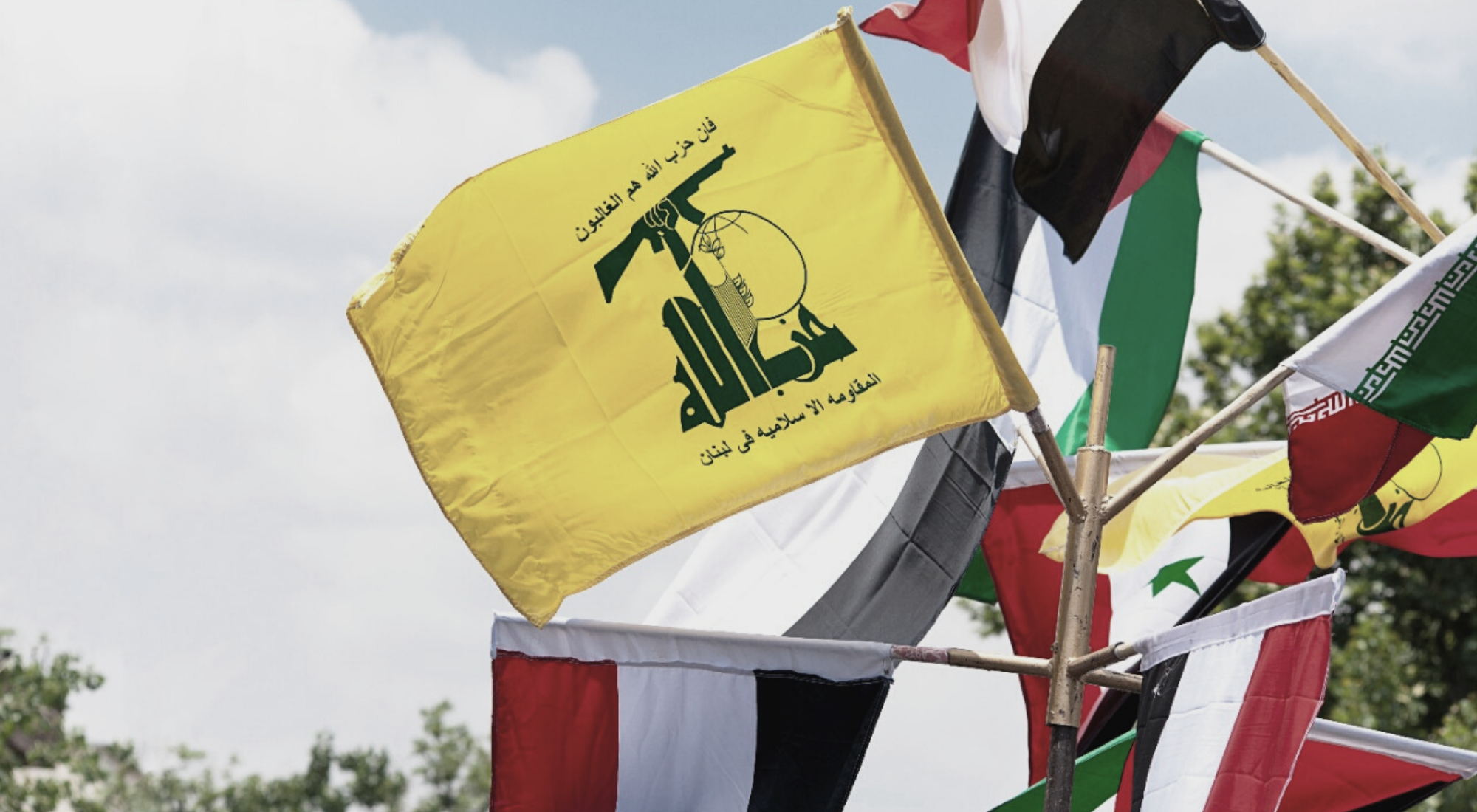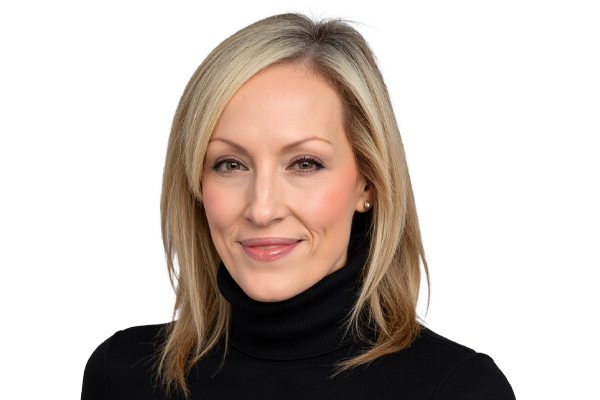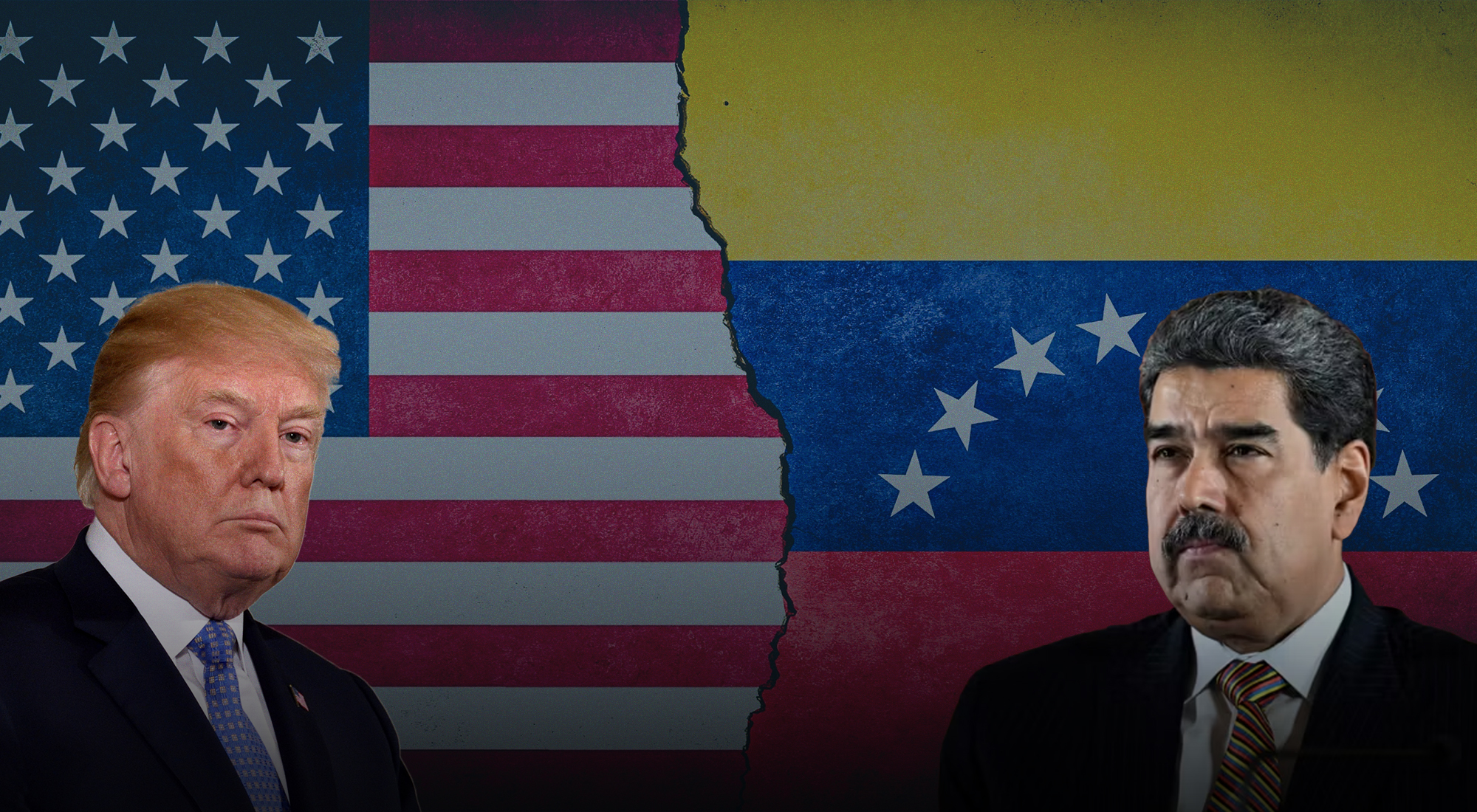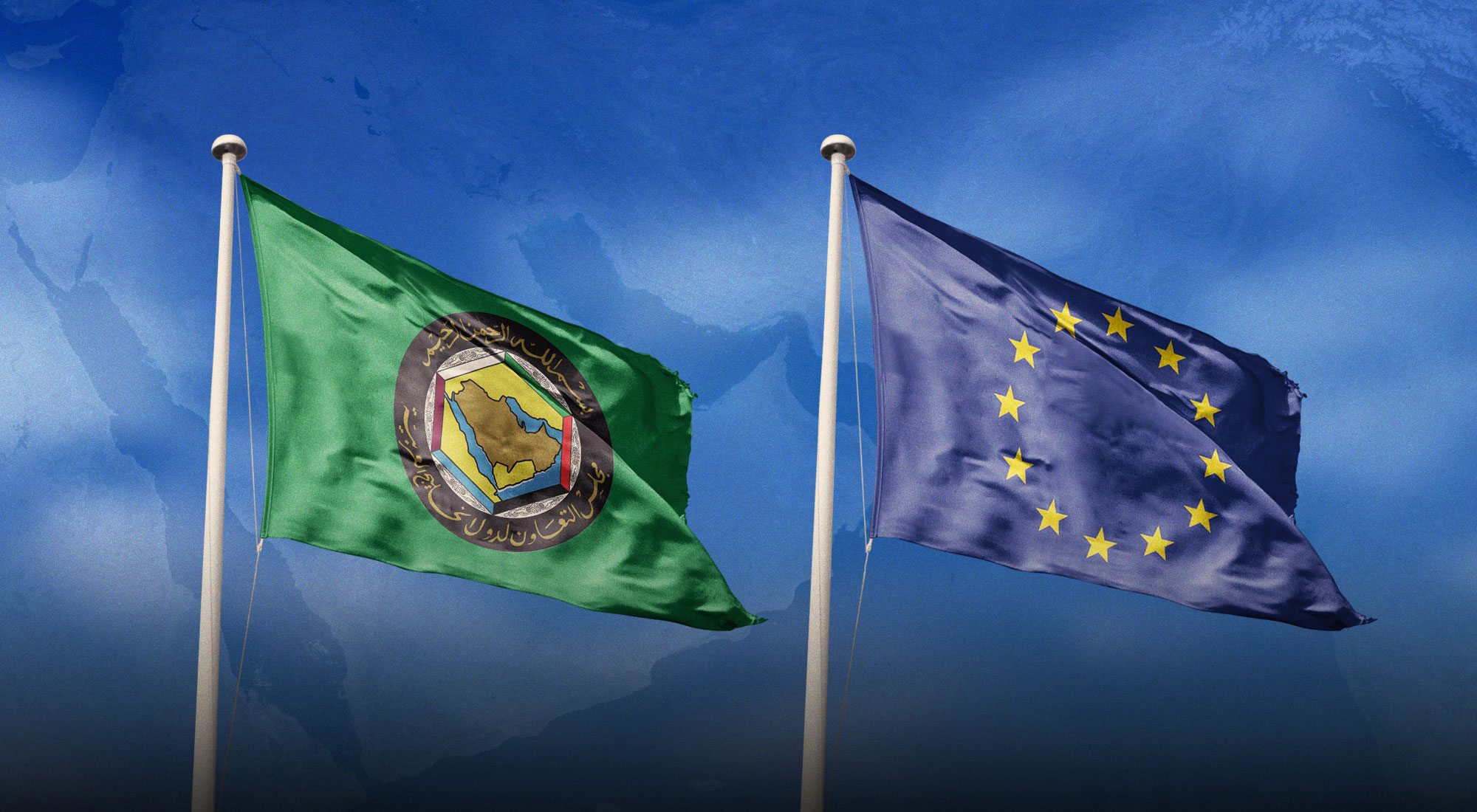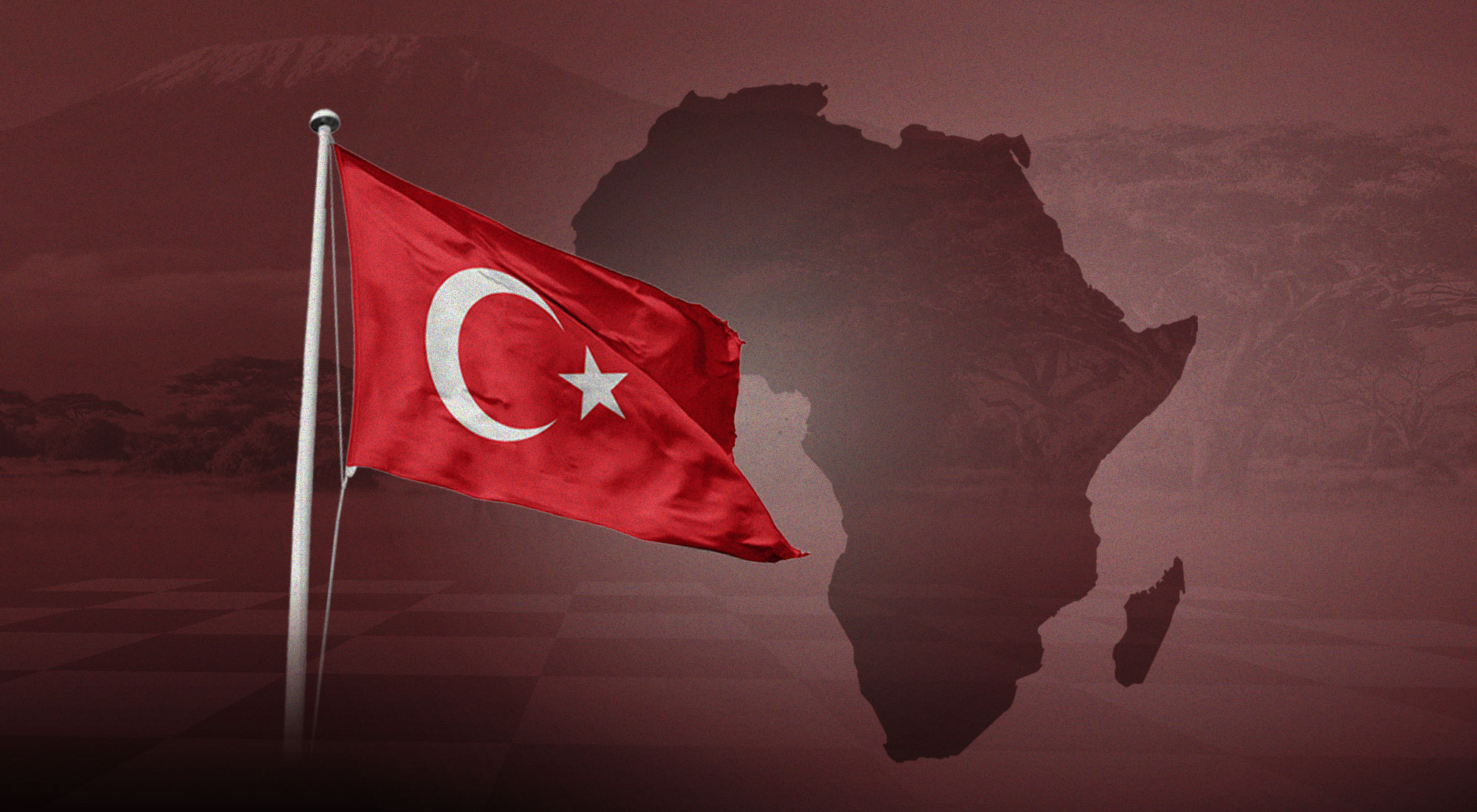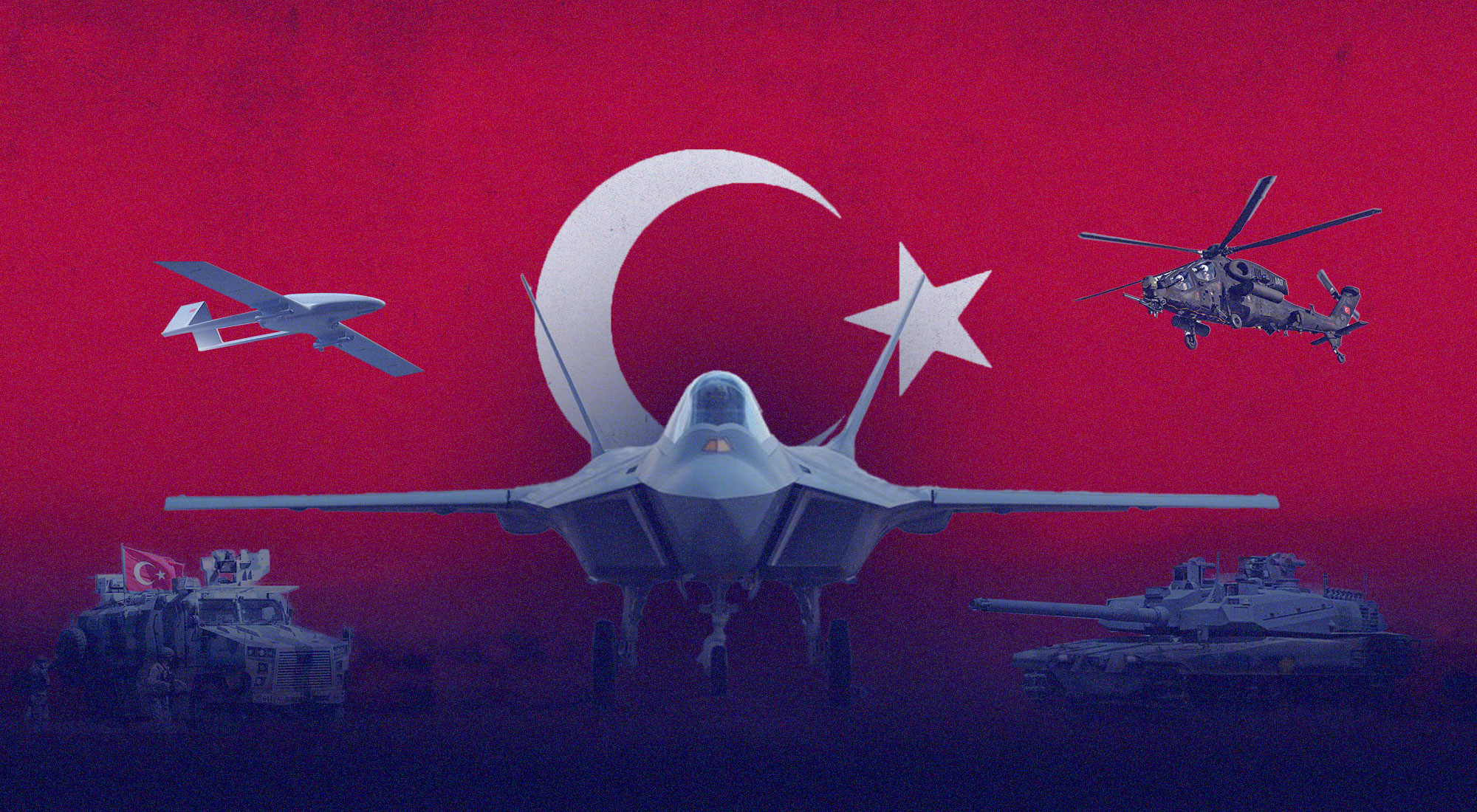Introduction
For decades, political instability in Yemen has been exacerbated by the influence of external forces, both militant groups and foreign nations acting in their own interests to undermine and exploit the stability of Yemen’s central governance. Such efforts have fueled the growth and militarized capabilities of homegrown resistance groups, in particular, the Houthi movement, also known as Ansar Allah, who follow the Zaydi sect of Shi’a Islam. The insurgency group was established in the 1990s as a revolutionary faction in opposition to the then Yemeni President, Ali Abdullah Saleh. In addition to the condemnation of President Saleh’s domestic policies, the Houthis also directed harsh criticisms at Saleh’s opposition to the Al Qaeda insurgency inside Yemen in the early 2000s.
The Houthis’ 2014 capture of the capital city of Sana’a created a downward spiral effect for the country’s stability, which started with the fleeing of the current President Abdrabbuh Mansur Hadi to Saudi Arabia in tandem with the eruption of a deadly civil war that continues to rage on today. In 2015, the Houthis set their sights southwards towards the coastal city of Aden, a critical maritime choke point between the Red Sea and the Arabian Sea. In response to such headway, the internationally recognized Yemeni government called for the creation of a Saudi-led coalition to restore Hadi to power and to deter any further Houthi capture of major Yemeni cities.
At this time, the Lebanese militant group Hezbollah began to increase its cooperation with the Houthi movement by providing weapons and training to its fighters, as well as offering political and military advice to the Houthi leadership. While the Houthis and Hezbollah share common enemies – Saudi Arabia and the United States – both groups also fall under a very influential umbrella: Iran. Following the Iranian Revolution in 1979, the funding and development of a proxy network across the Middle East became a key facet of Iran’s foreign policy to further expand its regional influence. For Iran, the sponsor-proxy relationship it has with groups such as Hezbollah and the Houthis offers a two-pronged effect. For one, such a relationship allows Iran to further expand its influence on audiences throughout the Middle East and beyond. Second, Iran can project power via proxy warfare to hash out its grievances and antagonize its enemies, particularly those with superior militaries such as the United States, Saudi Arabia, and Israel. Iran’s strategy of irregular warfare decreases the risk of direct conflict inside its borders and has become an efficient means of fighting without expending significant resources, while also minimizing escalation to conventional war.[1] For Hezbollah – Iran’s first proxy in the region – such a relation has catapulted the group from an underground militancy in the 1980s to the most heavily armed non-state actor in the world today.
Hezbollah: From an Underground Militia to Iran’s Primary Military Partner
The Israeli invasion of Lebanon in 1982 initially propelled the militant wing of Hezbollah, which Iran has regarded as its first line of defense against its perceived threats from the Jewish state. Acting as the militant group’s primary financial backer, it is estimated that Iran transfers hundreds of millions of dollars annually to Hezbollah.[2] The Trump Administration’s ‘maximum pressure campaign’ against Iran in the form of crippling sanctions – which President Biden has kept in place – pegged with a decline in oil prices due to the global COVID-19 pandemic resulted in a decrease in Iran’s annual funding to Hezbollah. Nevertheless, the two remain in lockstep in terms of ideology and regional expansionist aspirations. To compensate for financial shortfalls, Hezbollah has recently resorted to international drug-trade and goods smuggling, particularly wheat and fuel subsidized by the Lebanese government, which Hezbollah illegally re-sells in Syria at a profit.[3]
In addition to providing financial and logistical support, Iran is also Hezbollah’s main supplier of weapons. Arms transfers from Iran have helped to expand Hezbollah’s massively equipped arsenal, which is estimated to include 130,000 land attack missiles and rockets, elevating Hezbollah’s status to one of the world’s most formidably armed global terrorist networks. From its foundation, Hezbollah’s existence was driven by its opposition to Israeli and American influence in the region. And while any recent speech by Hezbollah’s Secretary General Hassan Nasrallah continues to reiterate that same message, the militant group’s main objective today is to ensure that Iran’s hegemonic interests and strict ideological principles are promoted throughout the region. At times, Hezbollah may diverge from such principles for domestic political purposes in order to vie the loyalties of its constituents by, for example, “working within Lebanon’s political system and advocating that Lebanese be free to choose their form of government.”[4] Hezbollah nonetheless continues to remain ideologically committed to Iran. Evidence of such solidarity could be seen from Hezbollah’s direct involvement in the Syrian Civil war of 2013, through its training of thousands of fighters and their deployment on the battlefield. Such efforts “played a decisive role in turning the tides of the civil war in favor of the Assad regime.”[5] For Iran, Syria remained one of its few allies in the region, and more importantly one who could offer a “critical air and land bridge to Hezbollah.”[6] The absence of such access via Syria would both limit Iran’s ability to transport weapons to Hezbollah and undermine its ability to influence Lebanese politics. By supporting Hezbollah’s ministers and members of Parliament, Iran has had direct access to Hezbollah’s “black market and financial connections to Lebanese banking institutions,”[7] allowing the regime to bypass crippling international sanctions.
Hezbollah’s Presence in Yemen
More recently, Hezbollah’s presence in Yemen and provision of military expertise to the Houthis – particularly in the assembly of ballistic missiles and drones[8] – is a result of Iran granting the group nothing short of a ‘green light’ to support the Yemeni militia. In December 2021, Yemen’s Information Minister Moammar Al-Eryani announced the death of Hezbollah military commander and expert Akram Al-Sayyed, who was killed by “artillery shelling launched by the government forces”[9] during the fighting over the Ma’rib province, which Eryani claimed was sure to be a “painful blow” to Tehran. Shortly thereafter, at an Arab Coalition press conference, spokesman Brigadier General Turki Al-Malki condemned Hezbollah for assisting the Houthis in utilizing the Sana’a airport as a launchpad to target Saudi Arabia using explosive-laden UAVs. The General also reiterated that Iran’s support for its proxies in the region is threatening regional stability: “The terrorist organization Hezbollah has spread destruction in the region and the world, and it bears the responsibility for targeting civilians in Saudi Arabia and Yemen.”[10]
In a letter published earlier last year by the United Nations Panel of Experts on Yemen, it was stated that there was an “increasing body of evidence suggesting that individuals or entities in the Islamic Republic of Iran supply significant volumes of weapons and components to the Houthis.”[11] Recent estimates indicate that since 2015, the Houthi rebels have launched attacks against Saudi Arabia using 430 ballistic missiles, 851 armed UAVs, and 100 explosive-laden boats – most of which have been targeted at civilians – with the number of such attacks doubling in 2021 compared to that of 2020.[12] Such developments highlight the determination and extension of Iran’s expansionist ambitions throughout the region, which are deeply pegged to the fundamental ideology of the Iranian Revolution. Militarized support for its proxy network in the Islamic world “is both an ideological and a constitutional commitment”[13] whereby projecting power via proxy warfare is part of a constitutional duty to expand the Islamic Revolution and its ideology far beyond Iran’s own borders.
The Houthis’ relationship with Iran is more transactional in nature and has far less to do with ideology, compared to that of Hezbollah. The Houthis – like Iran – are strategic, pragmatic actors whose objective is to be seen as a legitimate de-facto power, especially in Northern Yemen. For the Houthis, establishing relations with UN envoys and other aid agencies help to forge legitimacy, which in turn creates international acceptance of their leadership. However, the recent terrorist attacks targeting civilian cites in the UAE, for which Houthis have claimed responsibility for,[14] most certainly hamper any prospects of future international recognition, considering the outpouring of support the UAE received from world leaders across the globe condemning the strikes. Nonetheless, the Houthis’ greatest concern is their domestic agenda and grievances. Their aspiration is to have greater influence in ‘”Yemeni political affairs and inclusion in (or dominance of) whatever new political order emerges following the war,”[15] with the ultimate endgame to establish theocratic rule in Yemen.[16]
Exploiting Hezbollah’s Military Expertise
Hezbollah has supported the Houthis and participated in conflict alongside the group in Yemen at the behest of Iran. Their involvement has included expert military training, instruction on launching ballistic missiles and weapons assembly, operational guidance and technological support. Hezbollah often sends its battle-tested commanders to train and mobilize Houthi fighters. While approximate figures are unknown of the number of Hezbollah combatants who have engaged in conflict in Yemen over the years, one senior officer Abu Ali Tabtabai, who was formerly stationed in Syria, was sent to Yemen in 2015 to upgrade the Houthi guerrilla warfare tactics and establish training programs.[17] Sending such a prominent figure to assist the Houthis signals Hezbollah’s significant investment in and commitment to the war in Yemen.[18] In a televised speech in 2019, Hezbollah Secretary General Hassan Nasrallah openly admitted that Hezbollah fighters were engaging in combat alongside the Houthis: “We are not ashamed that we have martyrs from Hezbollah in Yemen . . . I tell you frankly, we do not hide this and we are not ashamed of it.” His only regret was that Hezbollah was not doing more to assist the Yemeni people in need.[19] Hezbollah’s entanglements in both Syria and Yemen have grown to become a source of contention inside Lebanon, whereby adventurous unilateral foreign policy decisions undermine the Lebanese government’s ability to control the repercussions of Hezbollah’s actions abroad. Considering sectarian tensions in Lebanon have consistently been simmering at a low-boil, domestic unease began to escalate as Hezbollah’s involvement in the Syrian war resulted in a stream of Syrian refugees which, once again, upset Lebanon’s ‘religious equilibrium’.[20]
Besides the tactile cost of its skilled fighters being killed in wars abroad, Hezbollah’s most considerable loss is the political price it has paid in the eyes of the Arab world. Once viewed as a resistance movement whose initial objective, published in its first ‘Open Letter of 1985’, was to push back against Western influence inside Lebanon – including Israeli occupation – while ensuring all Lebanese have the ability “to control their fate and to freely chose the form of government they desire”[21] juxtaposed to an armed party who is in a constant “sectarian struggle between Sunnis and Shia.”[22]
To exacerbate such qualms from its regional neighbors, in December 2021, the Arab Coalition released video footage and photographs detailing the extent of Hezbollah’s coordination and involvement in recent attacks on Saudi Arabia.[23] The evidence portrays Hezbollah commanders training Houthis on how to deploy explosive-laden UAV’s and launch missiles from the occupied Sana’a airport, with Saudi Arabia as its intended target. The video footage shows a Hezbollah commander in talks with the Houthi second-in-command and head of intelligence, Abu Ali Al Hakim, on the importance of maintaining the Red Sea city of Hodeidah:
“Our project is bigger than these disputes. We left everything and came to stand with you. The Syrian war is about to end, and most of the mujahideen will come to Yemen. If we lose the sea, we will not get any support and the mujahideen will not get it [the support]. We want a large crowd of mujahideen. We want to organize our ranks to prevent the fall of Hodeidah.”
The vital Hodeidah port serves as Yemen’s main point of entry for commercial goods and aid – a literal lifeline for millions of Yemenis living in poverty and who currently face the world’s largest humanitarian crisis.[24] The Saudi-led coalition have long claimed that the Houthis utilize Hodeidah as a point of entry for smuggling Iranian ballistic missiles into Yemen[25] and more recently stated that the port was being used as yet another launchpad for strategic military and marine operations.[26]
Hezbollah: Masters of Information Warfare
In order to fully advance its regional ambitions, Iran has taken a holistic approach to expanding its ideology in order to reach an audience far beyond its borders. Rather than simply provide its militias with funds, weapons, and military training, Iran has gone a step further to help sophisticate military operations of its proxies, particularly their outreach capabilities. Iran’s Islamic Radio and Television Union (IRTVU) is the state-controlled media apparatus and propaganda arm which regulates news outlets, television channels and websites in Iran and serves the Islamic Revolutionary Guard Corps-Qods Force (IRCG-QF), while offering financial and technical support to media outlets under the umbrella of Iran’s ‘axis of resistance’ abroad.[27]
However, in Lebanon, Hezbollah is directly responsible for the functions of IRTVU. Since its early foundational days, Hezbollah’s leadership adopted a strategy of ‘management of information’ to gain the upper hand over its adversaries while remaining keenly aware of its public image.[28] By controlling the narrative and pushing its agenda through its own newspapers, social media channels, and television stations, Hezbollah has tailored a version of itself that it wants the world to see. Hezbollah’s own television station, Al-Manar, has become so well received over the years that it has grown into one of the Arab world’s leading news organizations.[29] Al-Manar’s English website alleges its mission is to target Arabs and Muslims in a “unifying and open-minded speech that is based on the values of faith, knowledge, morals, human dignity, dialogue and cooperation among the followers of divine religions.”[30] By shaping its own messaging, Hezbollah, like Iran, aims to extend its influence outside the borders of Lebanon.
Nonetheless, Al-Manar was designated as a ‘Specially Designated Global Terrorist Entity’ by the United States government in 2006, based on the claims that the station operates as the media arm of the Hezbollah terrorist network while orchestrating fundraising and recruitment efforts for the organization.[31] Stuart Levey, the then Treasury Under Secretary for Terrorism and Financial Intelligence stated on the ruling: “Any entity maintained by a terrorist group, whether masquerading as a charity, a business, or a media outlet is as culpable as the terrorist group itself.”
Such a setback did not deter Hezbollah from passing its media savviness and expertise on to the Houthis. In 2011, Hezbollah helped the group establish Al-Masirah, the Houthis’ official media outlet whose headquarters are in Dahieh, Beirut – a Hezbollah stronghold suburb. Al-Masirah has become an effective propaganda tool for the Houthis, “shaping the organization’s narrative of the war and reporting on the conditions throughout the country.”[32] Such support from Hezbollah only reiterates the notion that the group acts as a ‘state within a state’ inside Lebanon and its unilateral foreign policy directives, such as providing satellite coverage for Al-Masirah to broadcast Houthi propaganda, has nonetheless brought condemnation from Yemen’s own Minister of Information, Muammar al-Iryani. Iryani claims Hezbollah has become a “mouthpiece for the Houthi militias,” and has pled with the Lebanese government to halt the broadcasting of Al-Masirah’s satellite channels and websites[33] and to adhere to a policy of “non-interference,” stating that “the Lebanese Hezbollah is part of the Lebanese government and did not just stop at providing logistical support including intelligence and fighters to the Iranian Houthi militias, but has turned the southern suburb to a platform to manage the coup’s propaganda machine in Yemen and attack and tarnish the coalition that supports legitimacy.”[34]
Conclusion
Diplomatic tensions between Lebanon and Saudi Arabia erupted last fall following comments made by Lebanon’s former Information Minister George Kordahi, who had criticized the war in Yemen claiming that the Houthis “had a right to defend themselves.” While the remark was made prior to his cabinet appointment, such a pretext created enough of a spark for several Arab Gulf states, including Saudi Arabia, to recall their ambassadors from Lebanon while expelling Lebanese envoys from their countries, expressing exhaustion over Hezbollah’s dominance in Lebanese politics and calling on Lebanon to “end terrorist Hezbollah influence over the state.”[35]
Hezbollah’s unilateral foreign policy actions have long sowed seeds of discourse within Lebanon’s political elite. However, Hassan Nasrallah’s recent aggressive public spats with Saudi Arabia is creating a distance between the militant group and its longtime ally, Lebanese President Michel Aoun, whose party – the Free Patriotic Movement – is part of a political coalition with Hezbollah known as the March 8 Alliance.
Aoun recently took aim at Hezbollah for further worsening relations with the Gulf by “interfering in matters that do not concern [them],”[36] referring to Hezbollah’s complex involvement in the war in Yemen. Lebanese Prime Minster Najib Mikati also spoke with much frustration over Nasrallah’s remarks on Saudi Arabia, stating his comments did not represent the position of the Lebanese government and most Lebanese: “It is not in Lebanon’s interest to offend any Arab country, especially the Gulf states . . . while we call for Hezbollah to be part of Lebanon’s diverse affiliation, its leadership is in opposition to this trend with positions that first harm the Lebanese and secondly Lebanon’s relations with its brother. For God’s sake, have mercy on Lebanon and the Lebanese, and stop the hateful sectarian and political rhetoric.”[37]
Such internal turmoil between Lebanon’s top political elites comes at a time when the country continues to spiral out of control, which only serves to fuel the flames of Lebanon’s economic crisis now entering its third year. Hezbollah’s continued involvement in Yemen only functions to serve the ideological objectives it shares with Iran, while Lebanon remains paralyzed by Hezbollah’s conduct – the recourse of which continues to entangle the entirety of the country, regardless of political party or ideology. Hezbollah’s priority is to keep a tight grip on its political power inside Lebanon while at the same time operating independently from the Lebanese government, serving as Iran’s militant arm abroad. Such a dichotomy undermines the interests of the Lebanese people, while severely tarnishing relations between the Lebanese government and its longtime Arab Gulf allies; a relation that it financially cannot survive without for much longer.
References
[1] Seth G. Jones, Jared Thompson, Danielle Ngo, Brian McSorley, and Joseph S. Bermudez Jr., “The Iranian and Houthi War against Saudi Arabia,” Center for Strategic & International Studies, December 21, 2021, https://www.csis.org/analysis/iranian-and-houthi-war-against-saudi-arabia.
[2] “Attacking Hezbollah’s Financial Network: Policy Options,” House Hearing Before the Committee on Foreign Affairs, House of Representatives, 115 Congress, United States Senate, June 8, 2015, https://www.govinfo.gov/content/pkg/CHRG-115hhrg25730/html/CHRG-115hhrg25730.htm.
[3] Lina Khatib, “How Hezbollah Holds Sway over the Lebanese State,” Chatham House, June 2021, https://bit.ly/3CfRVzb.
[4] Trevor Johnston, Matthew Lane, Abigail Casey, Heather J. Williams, Ashley L. Rhoades, James Sladden, Nathan Vest, Jordan R. Reimer, and Ryan Haberman, “Could the Houthis Be the Next Hizballah?: Iranian Proxy Development in Yemen and the Future of the Houthi Movement,” (California: Rand Corporation, 2020), https://www.rand.org/content/dam/rand/pubs/research_reports/RR2500/RR2551/RAND_RR2551.pdf.
[5] Matthew Levitt, “Hezbollah’s Regional Activities in Support of Iran’s Proxy Networks,” Middle East Institute, July 26, 2021, https://www.mei.edu/publications/hezbollahs-regional-activities-support-irans-proxy-networks.
[6] Philip H. Gordon, Losing the Long Game: The False Promise of Regime Change in the Middle East (New York: St. Martin’s Press, 2020).
[7] Ibid.
[8] “The Mounting Danger of Hezbollah-Houthi Cooperation,” The National, December 28, 2021, https://bit.ly/3HxpYDV.
[9] “Yemeni Minister Says Hezbollah Military Commander Killed in Marib’s Fighting,” Saudi Gazette, December 11, 2021, https://bit.ly/3prlo3D.
[10] “Arab Coalition: Lebanon’s Hezbollah Trains Yemen’s Houthis to Target Saudi Arabia,” Al Arabiya News, December 26, 2021, https://bit.ly/3vspyML.
[11] United Nations, “Letter Dated 22 January 2021 from the Panel of Experts on Yemen Addressed to the President of the Security Council,” United Nations Digital Library, https://bit.ly/3BZJ8Bc.
[12] Seth G. Jones, Jared Thompson, Danielle Ngo, Brian McSorley, and Joseph S. Bermudez Jr., “The Iranian and Houthi War against Saudi Arabia,” Center for Strategic & International Studies, December 21, 2021, https://www.csis.org/analysis/iranian-and-houthi-war-against-saudi-arabia.
[13] Kasra Aarabi, “The Fundamentals of Iran’s Islamic Revolution,” Tony Blair Institute for Global Change, February 11, 2019, https://institute.global/policy/fundamentals-irans-islamic-revolution.
[14] U.S. Department of State, “Attacks in Abu Dhabi: Press Statement,” January 17, 2022, https://www.state.gov/attacks-in-abu-dhabi/
[15] Thomas Juneau, “Iran’s Policy towards the Houthi’s in Yemen: A Limited Return on a Modest Investment,” International Affairs 92, No.3 (May 2016), 647.
[16] Mohammad Al-Rumaihi, “To Avert a Theocracy in Yemen, the Houthis Must Be Stopped,” Gulf International Forum, May 25, 2021, https://gulfif.org/to-avert-a-theocracy-in-yemen-the-houthis-must-be-stopped/.
[17] Matthew Levitt, “Hezbollah’s Regional Activities in Support of Iran’s Proxy Networks,” Middle East Institute, July 26, 2021, https://www.mei.edu/publications/hezbollahs-regional-activities-support-irans-proxy-networks.
[18] Matthew Levitt, “Waking Up the Neighbors: How Regional Intervention Is Transforming Hezbollah,” The Washington Institute for Near East Policy, July 23, 2015, https://bit.ly/3M9mwTj.
[19] “Hassan Nasrallah Admits the Presence of Members of Hezbollah in Yemen and the Killing of a Number of Them,” Mareb Press, February 16, 2019, https://marebpress.net/news_details.php?lng=arabic&sid=147754.
[20] Paul Danahar, The New Middle East: The World After the Arab Spring (London: Bloomsbury Publishing, 2015).
[21] Aurélie Daher, Hezbollah: Mobilization and Power, (London: Hurst & Company, 2019).
[22]Mazen Ezzi, “Lebanese Hezbollah’s Experience in Syria,” European University Institute, August 18, 2020, https://data.europa.eu/doi/10.2870/446912.
[23] “Saudi Arabia-Led Coalition Says Hezbollah Had a Hand in Houthi Attacks from Yemen,” The National, December 26, 2021, https://bit.ly/3hsEGkW.
[24] “Clashes Erupt in Yemen’s Hodeidah as Pro-Coalition Forces Cede Ground to Houthis,” Reuters, November 14, 2021, https://reut.rs/3stNXPW.
[25] The Embassy of the Kingdom of Saudi Arabia – Washington D.C., “Coalition Press Conference: Findings on Houthi Ballistic Missile Attacks on the Kingdom of Saudi Arabia,” March 26, 2018, https://bit.ly/3C9gKwr.
[26] “Saudi-Led Coalition Says Houthi Actions Turn Yemen Ports into Legitimate Targets,” Reuters, January 8, 2020, https://reut.rs/3M8KhuT.
[27] Hamdi Malik, “Understanding Iran’s Vast Media Network in Arab Countries,” The Washington Institute for Near East Policy, March 2, 2021, https://www.washingtoninstitute.org/pdf/view/16553/en.
[28] Colin P. Clarke, “How Hezbollah Came to Dominate Information Warfare,” Rand Corporation, September 19, 2017, https://www.rand.org/blog/2017/09/how-hezbollah-came-to-dominate-information-warfare.html.
[29] Ibid.
[30] “About Us,” Al-Manar Website, https://english.almanar.com.lb/about.
[31] U.S. Department of the Treasury, “U.S. Designates Al-Manar as a Specially Designated Global Terrorist Entity Television Station is Arm of Hizballah Terrorist Network,” March 23, 2006, https://www.treasury.gov/press-center/press-releases/pages/js4134.aspx.
[32] Trevor Johnston, Matthew Lane, Abigail Casey, Heather J. Williams, Ashley L. Rhoades, James Sladden, Nathan Vest, Jordan R. Reimer, and Ryan Haberman, “Could the Houthis Be the Next Hizballah?: Iranian Proxy Development in Yemen and the Future of the Houthi Movement,” (California: Rand Corporation, 2020), https://www.rand.org/content/dam/rand/pubs/research_reports/RR2500/RR2551/RAND_RR2551.pdf.
[33] “Hezbollah’s Training of the Houthis and the Secret of Unity 800,” Al-Ayyam Newspaper, February 20, 2021, https://www.alayyam.info/news/8IHD7E8V-0X3BBG-696A.
[34] “Yemeni Minister: Hezbollah Has Become Mouthpiece for Houthi Militias,” Al-Arabiya, September 30, 2018, https://bit.ly/3Hy663r.
[35] Timour Azhari, “Hezbollah’s Criticism of Saudi Not in Lebanon’s Interest – PM,” Reuters, January 4, 2022, https://www.reuters.com/world/middle-east/hezbollahs-criticism-saudi-not-lebanons-interest-pm-2022-01-03/.
[36] Jennifer Holleis and Razan Salman, “Lebanon’s PM to Hezbollah: ‘For God’s Sake, Have Mercy,” Deutsche Welle (DW), January 8, 2022, https://bit.ly/3HzzIxg.
[37] Ibid.



